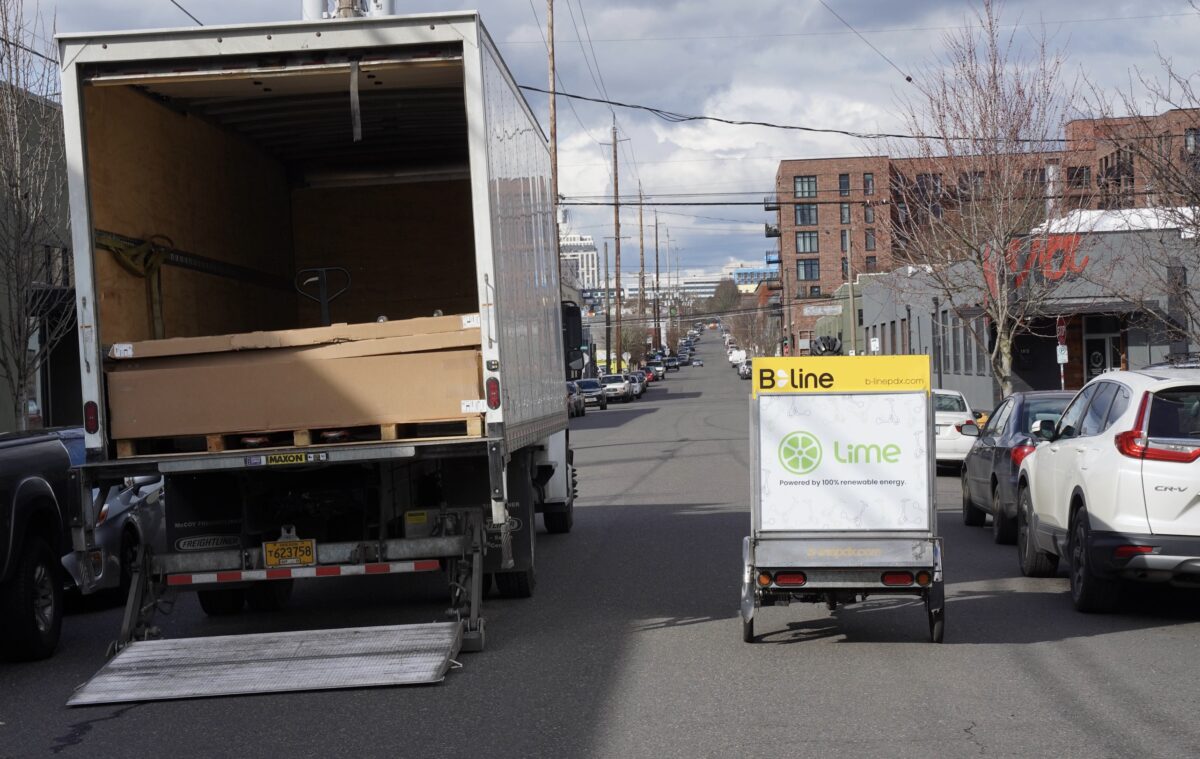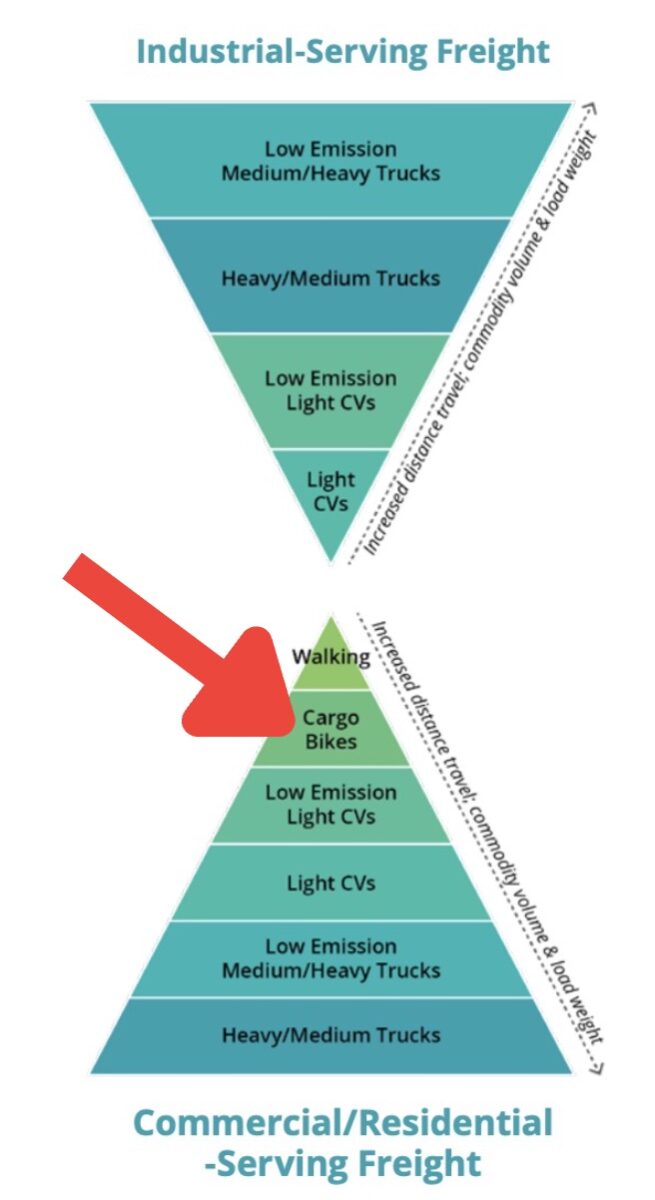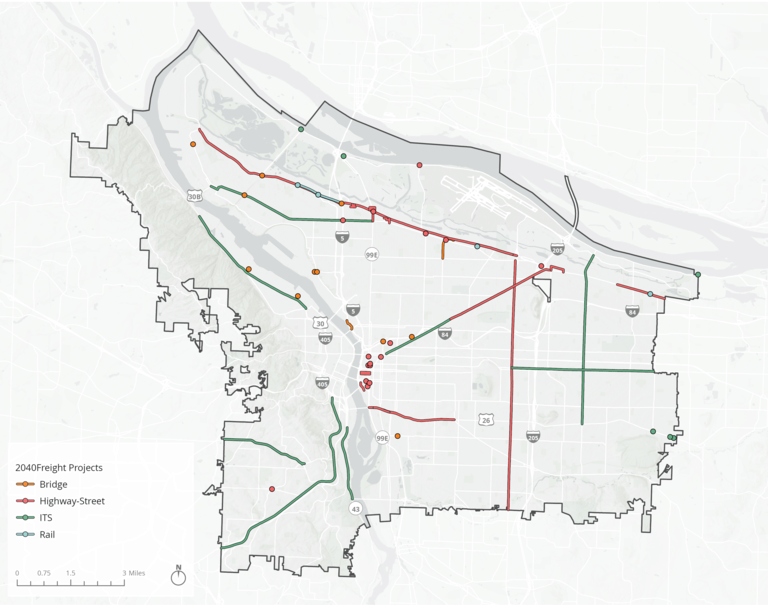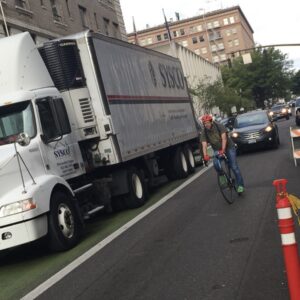We have lived with the impacts of large commercial trucks in our city for many years. Now, would-be reformers finally have a golden opportunity to weigh in on the official city freight plan.
The Portland Bureau of Transportation has been working on the 2040 Freight Plan, an update to the city’s Freight Master Plan adopted by City Council in 2006, for several years now. Recently, they released a draft plan for review, which includes actions PBOT wants to take in the first 10 years after the plan’s adoption to make urban freight safer, cleaner and more equitable.
The draft plan is expansive and some parts are quite technical, but it also touches on several key problems with urban freight in Portland that are relevant to people who bike and walk in the city. One of these potential solutions posed in the plan involves embracing a mode shift from vans to cargo bikes for last-mile delivery via an “enhanced Commercial Cargo Bike Pilot Program” for “accommodating pedal and electric-assist cargo bikes as a means for reducing last-mile truck delivery trips.”
It’s not clear exactly what PBOT’s cargo bike pilot program would look like, but it’s good to see the city endorse it as a viable alternative to other delivery vehicles. There are lots of examples showing that bikes can be a very useful tool for urban freight transport solutions. Local company B-Line Urban Delivery uses electric cargo trikes to deliver goods around the city, saving gas and reducing the dangers that trucks pose on city streets. Other cities around the world that have embraced smaller vehicles for freight delivery are showing that it’s a safer, more eco-friendly and often quicker option than relying on a fleet of trucks or vans.
Another priority listed in the draft plan is safety, acknowledging the danger that commercial trucks pose to people walking and biking on Portland’s streets. In the plan, PBOT points out that truck crashes in Portland are increasing, and that the majority of the victims in these crashes that have resulted in severe or fatal injury have been people walking or biking. This is something they want to address by “improving visibility” and “implementing safety countermeasures for vulnerable users, such as separated facilities for bicyclists, clear signage, or providing for alternate parallel routes.”
The plan also includes a list of freight projects PBOT wants to implement within the next 20 years, many of which BikePortland has covered in the past because of their active transportation elements. These projects do not necessarily have designated funding yet, but being placed on the Freight Plan gives them more legitimacy to find funding in the future. One high priority item on the list is the $17.5 million N Burgard St viaduct replacement on N Lombard St, which would include grade-separated bike lanes. A $5.5 million plan to find access solutions in the freight train-plagued Central Eastside is also listed, but not as a project that will be prioritized for funding.
The survey will be open for public input until April 9th, and on March 23 at 6:00 pm, PBOT will host a virtual open house for the freight plan. You can find the full 2040 Freight draft plan here.









Thanks for reading.
BikePortland has served this community with independent community journalism since 2005. We rely on subscriptions from readers like you to survive. Your financial support is vital in keeping this valuable resource alive and well.
Please subscribe today to strengthen and expand our work.
Interesting that a one way couplet for Yamhill/Taylor is on here. I can’t speak as to if it would improve freight conditions, but I very rarely see freight on Taylor now. There is a fair amount of research on the effects of one way couplets vs. two way streets on both foot traffic and motor vehicle speed. Typically, one way couplets encourage faster motor vehicle speed and worsen pedestrian conditions.
It’s not a high priority project, but the fact that it can even make the list tells me that PBOT doesn’t really take the TSP “pedestrian first” connotation all that seriously. If they did, they would be rolling out plans to undo one way couplets – not add more